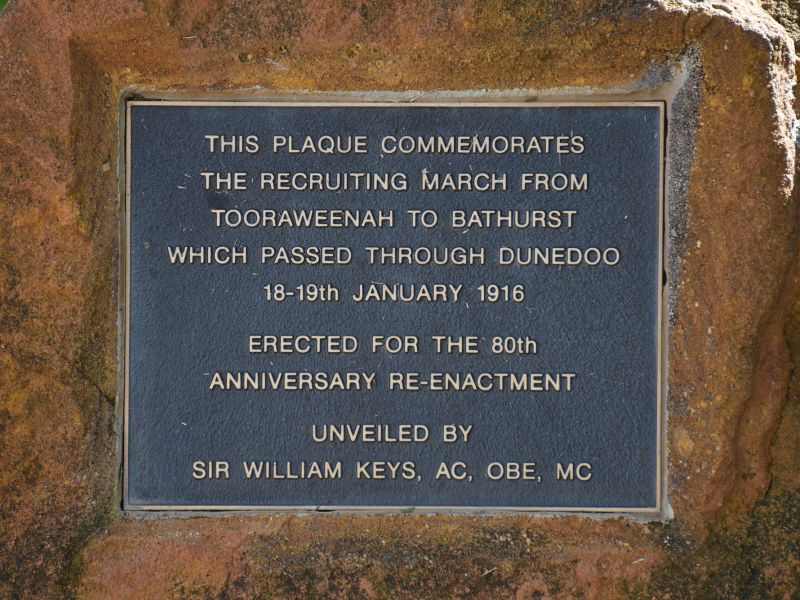The Kookaburra Recruiting March 1916
When Australia became committed to provide troops for the First World War, recruiting committees across the country were formed to help boost recruitment numbers.
The first recruiting march, in which men from ‘the bush’ organised marches to major recruiting centres, gathering more recruits along the way, began at Gilgandra, NSW, the famous ‘Coo-ee March. See Gilgandra Coo-ee March Memorial Park.
The Kookaburra March commenced in Tooraweenah, NSW on January 12, 1916, with twenty five recruits from Collie, Wongarbon, Coonamble, Gilgandra and Gulargambone. This march commenced in same region as the Coo-ees and was timed to coincide with the Central West Boomerang March.
William Hitchen, who organised the Coo-ee March from Gilgandra, also assisted in the organisation of the Kookaburra March.
From Tooraweenah the route for the march passed through the towns of, Yarragrin, Mendooran, Boomley, and Cobbora before passing through Dunedoo on the 18th and 19th of January 1916. It then continued to Birrewa, Tallewang, Gulgong, Mudgee, Havilah, Lue, Rylstone, Kandos, Clandulla, Ilford, Running Stream, Capertee, Ben Bullen, Cullen Bullen, Portland, Meadow Flat and Yetholme before finishing in Bathurst.
After their enlistment and training, many of the Kookaburras were sent as reinforcements for the 45th Australian Infantry Battalion.
Of the original recruits who started out from Tooraweenah, seven men returned to Australia wounded or ill before the war ended, seven men died on the Western Front and only nine men returned after the war ended.
As noted on the Dunedoo plaque, a re-enactment march was held in 1996.
- Australian War Memorial https://www.awm.gov.au/articles/encyclopedia/recruiting_march/kookaburras

 Henry C Moulds
Henry C Moulds